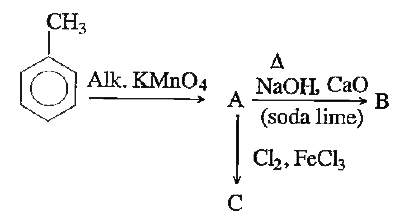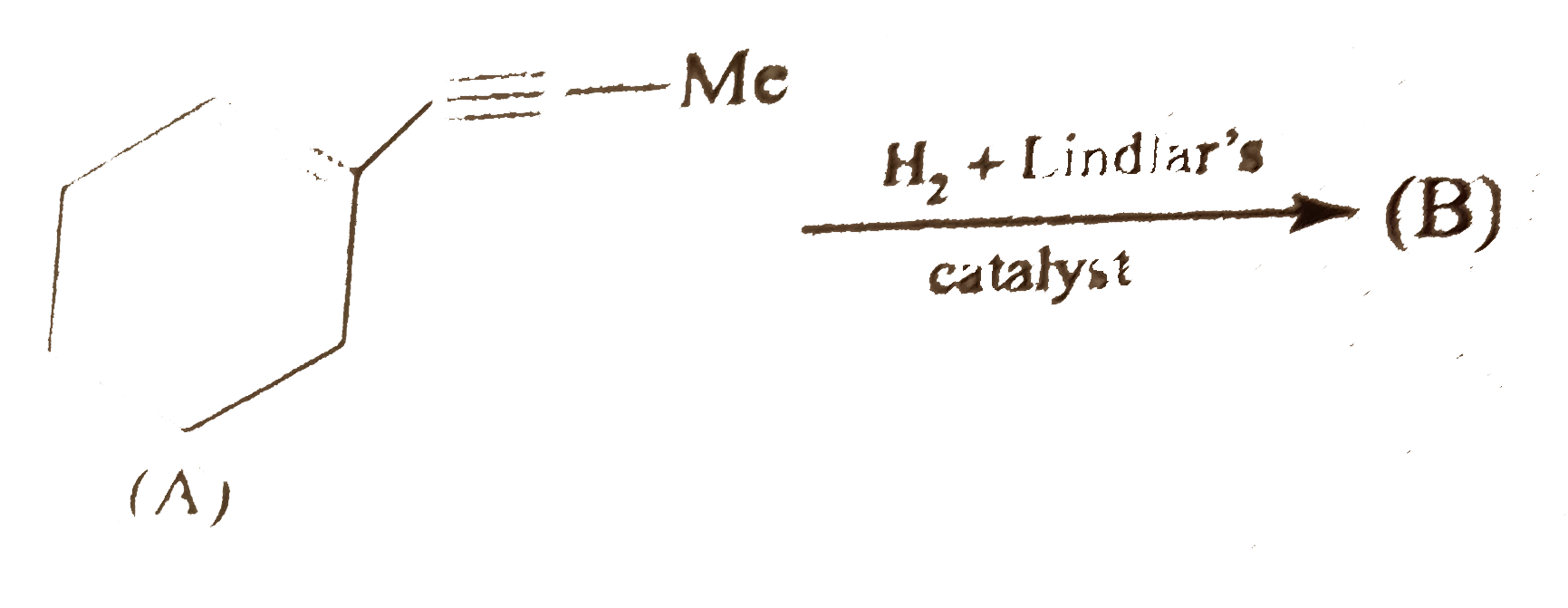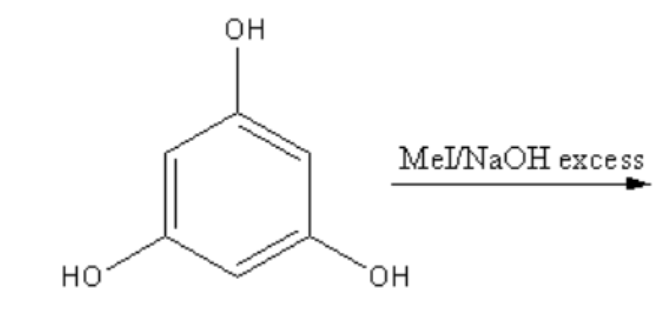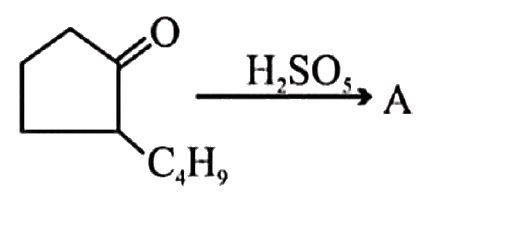Identify the products (A) and (B) in the reactions.
RX+AgCN→(A)––––+AgX
RX+KCN→(A)––––+KX
(A)-RCN, (B)- RCN
(A)-RCN, (B)-RNC
(A)-RNC, (B)-RCN
(A)-RNC, (B)-RNC
The correct Answer is:C
To identify the products (A) and (B) in the given reactions, we need to analyze the reactions step by step.
Step 1: Analyze the first reaction
The first reaction is:
RX+AgCN→(A)+AgX
- Here, RX represents an alkyl halide where R is an alkyl group and X is a halogen (Cl, Br, or I).
- When RX reacts with silver cyanide (AgCN), it forms a product (A) and a precipitate of silver halide (AgX).
- The product formed when an alkyl halide reacts with AgCN is isocyanide (RNC).
Step 2: Analyze the second reaction
The second reaction is:
RX+KCN→(A)+KX
- In this case, KCN is potassium cyanide, which is ionic.
- When RX reacts with KCN, it forms a product (A) and potassium halide (KX).
- The product formed when an alkyl halide reacts with KCN is alkyl cyanide (RCN).
Conclusion
From the analysis:
- In the first reaction, product (A) is isocyanide (RNC).
- In the second reaction, product (A) is alkyl cyanide (RCN).
- The precipitate (B) in both reactions is the corresponding silver or potassium halide (AgX or KX).
Thus, the products are:
- (A) = RNC (isocyanide) from the first reaction.
- (B) = RCN (alkyl cyanide) from the second reaction.
Final Answer
- Product (A) = Isocyanide (RNC)
- Product (B) = Alkyl Cyanide (RCN)
The first reaction is:
RX+AgCN→(A)+AgX
- When RX reacts with silver cyanide (AgCN), it forms a product (A) and a precipitate of silver halide (AgX).
- The product formed when an alkyl halide reacts with AgCN is isocyanide (RNC).
The second reaction is:
RX+KCN→(A)+KX
- When RX reacts with KCN, it forms a product (A) and potassium halide (KX).
- The product formed when an alkyl halide reacts with KCN is alkyl cyanide (RCN).
From the analysis:
- In the first reaction, product (A) is isocyanide (RNC).
- In the second reaction, product (A) is alkyl cyanide (RCN).
- The precipitate (B) in both reactions is the corresponding silver or potassium halide (AgX or KX).
- (A) = RNC (isocyanide) from the first reaction.
- (B) = RCN (alkyl cyanide) from the second reaction.
- Product (A) = Isocyanide (RNC)
- Product (B) = Alkyl Cyanide (RCN)
Topper's Solved these Questions
- HALOALKANES AND HALOARENESBOOK - NCERT FINGERTPS ENGLISHCHAPTER - HALOALKANES AND HALOARENESEXERCISE - Higher order thinking skills
8 Videos
- HALOALKANES AND HALOARENESBOOK - NCERT FINGERTPS ENGLISHCHAPTER - HALOALKANES AND HALOARENESEXERCISE - Exemplar problems
24 Videos
- HALOALKANES AND HALOARENESBOOK - NCERT FINGERTPS ENGLISHCHAPTER - HALOALKANES AND HALOARENESEXERCISE - Physical properties
7 Videos
- GENERAL PRINCIPLES AND PROCESSES OF ISOLATION OF ELEMENTSBOOK - NCERT FINGERTPS ENGLISHCHAPTER - GENERAL PRINCIPLES AND PROCESSES OF ISOLATION OF ELEMENTSEXERCISE - Assertion And Reason
15 Videos
- POLYMERS BOOK - NCERT FINGERTPS ENGLISHCHAPTER - POLYMERS EXERCISE - NCERT Exemplar
9 Videos
Similar Questions
Identify the products A, B and C:

View SolutionIdentify the products (X) and (Y) in the given reaction:

View SolutionIdentify (A) and ⋅(B) in the reaction

View SolutionIdentify products A and B in the following reaction

View Solution
Identify product (B)
View SolutionIdentify the product (P) in the following reaction.

View SolutionIdentify the compounds A and B in the given reactions :

View SolutionIdentify the product A in the given reaction,

View SolutionIdentify the product A in the following reaction :

View Solution
Identify the major product (B).
View Solution
